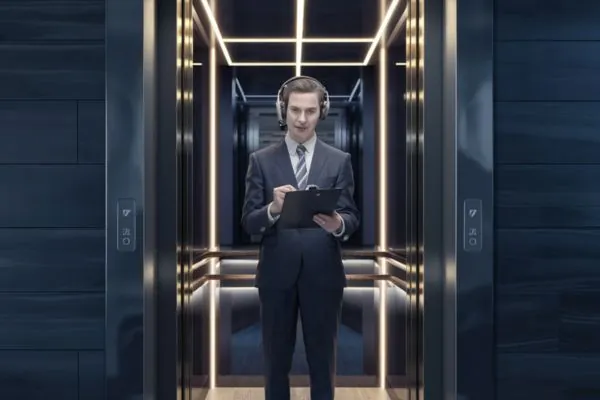The Americans with Disabilities Act (ADA) is a cornerstone in the quest for equal access, ensuring that buildings and services are accessible to everyone. Central to this mission is the focus on elevators in existing buildings, critical components that bridge the gap. The importance of ADA-compliant elevators transcends mere functionality; it embodies the commitment to a more accessible world.
Applicability of ADA Elevator Requirements

Under ADA regulations, existing buildings are defined as structures erected before the enforcement of these standards. The mandate for installing elevators is contingent upon specific criteria, such as the building’s number of stories and the total square footage per floor. While historical buildings and instances of undue hardship may warrant exceptions, the overarching goal is clear: to weave accessibility into the fabric of every structure.
Key ADA Elevator Requirements for Existing Buildings
Minimum Elevator Size and Capacity: ADA standards dictate that elevator doors must be at least 36 inches wide, with a car depth of no less than 51 inches and a width of 68 inches minimum, ensuring ample maneuvering space for wheelchairs. This information varies per usage.

Door Operation and Signaling
Elevators must feature automatic doors with a minimum hold time of 3 seconds, equipped with reopening sensors. Moreover, audible and visual signals for door operations and floor arrivals are mandatory, enhancing the usability for individuals with sensory impairments.
Control Panel Accessibility
The accessibility of control panels is non-negotiable, with button heights capped at 42 inches from the floor and a minimum button size of 0.75 inches in diameter. Raised or Braille lettering for floor designations, alongside visual and audible call button indicators, is essential for ensuring that elevator controls are within everyone’s reach.
It is always imperative that the application is being developed for the correct usage of the elevators i.e. hospitals, call centers, hospitality, etc. all have similar applications yet may require different size elevators and components.
Additional Considerations for Existing Buildings
Accessibility Retrofitting Standards
Incorporating elevators into existing structures demands a thoughtful approach that minimizes disruption. The financial aspect, plays a crucial role in planning and execution.
Elevator Safety Codes (ASME A17.1)
Aligning with elevator safety standards is paramount. This section would delve into the necessity of complying with the ASME A17.1 standards, ensuring that elevators not only meet accessibility requirements but are also safe and reliable.
Read more related article:
Elevator Standards: Codes And Standards All Buildings Should Know
Navigating ADA Compliance for Elevators: Essential Steps and Resources
To embark on the journey of ensuring ADA compliance for elevators in existing buildings, a wealth of resources and steps are available to guide you through. Leveraging these resources effectively can make the modernization process smoother and more efficient. Ensuring your building’s elevators are ADA-compliant is a crucial step towards making your space accessible to all. Here’s how you can start this important process, complete with resources and actionable steps:

1. Consult the ADA Standards for Accessible Design
The United States Access Board provides a comprehensive guide to the ADA Standards for Accessible Design. This guide (https://www.access-board.gov/) provides comprehensive guidelines and resources on ADA standards, including detailed specifications for elevator compliance. This site is an invaluable tool for understanding legal requirements and best practices.
2. Professional Assessment
Engage with a professional elevator consultants or ADA compliance specialists who can provide an in-depth analysis of your current elevator system and recommend necessary upgrades or modifications.
3. Find Qualified Elevator Contractors
The National Association of Elevator Contractors (NAEC) (https://www.naec.org/) offer directories of professionals who specialize in compliant elevator solutions
4. Contact a Building Accessibility Specialist, if necessary
ADA National Network provides information, guidance, and access to professionals who can assist with making your building fully accessible.
5. Stay Informed About Safety Codes
The American Society of Mechanical Engineers (ASME) sets safety standards for elevators. ASME A17.1 is the relevant safety code for elevators and escalators.
6. Plan for Long-Term Compliance and Maintenance
Develop a plan for regular maintenance and periodic reviews of your elevator system to ensure ongoing ADA compliance and safety. Consider establishing a service contract with a trusted elevator maintenance provider.
By following these steps and utilizing the resources provided, you can navigate the process of making your elevators ADA-compliant, enhancing accessibility, and ensuring your building is welcoming to everyone.
Ensuring that elevators in existing buildings comply with ADA standards is not merely a regulatory requirement but a moral imperative that reflects our commitment to inclusivity and equality. While the process involves navigating complex regulations, understanding specific building needs, and making the necessary modifications, the end goal of creating accessible spaces for all individuals is undeniably worthwhile. By leveraging the available resources and taking the recommended steps, building owners and managers can upgrade their elevators to meet ADA requirements, thus contributing to a more inclusive society.
This endeavor, while undoubtedly challenging, represents a significant investment in the building’s value, safety, and accessibility. As we move forward, it’s essential to remember that accessibility improvements benefit everyone by creating more usable and welcoming environments. By prioritizing ADA compliance in elevators, we take a crucial step towards ensuring that every individual, regardless of ability, has equal access to and enjoyment of the built environment around them.
